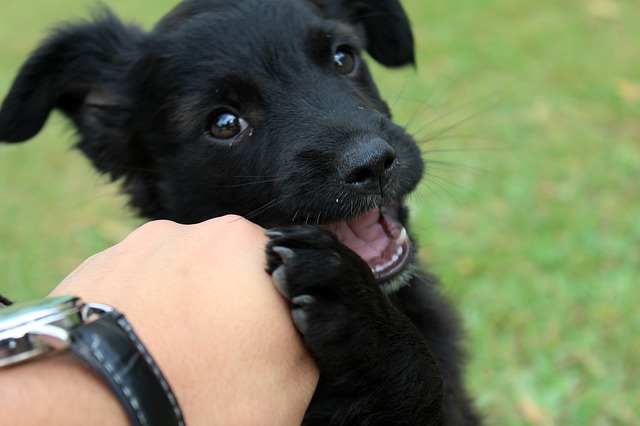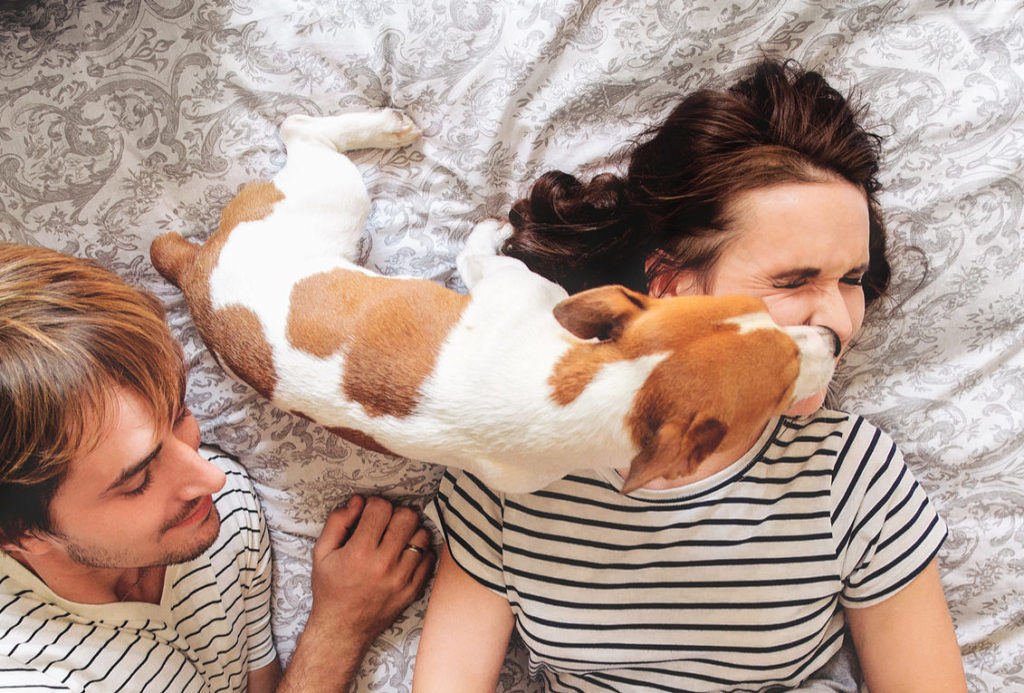Every night at exactly the same time, your dog gives you “the look.” You don’t need to check the clock to know it’s time for dinner. For other dog owners, the same phenomenon happens when it’s time to leash up and go for a walk. No matter what you’re doing, the dog always knows when it’s time to go. And then there are dogs that know exactly when it’s time for their owners to come home. They pull off this trick without seeing a car or hearing its engine. All this evidence points to the idea dogs can tell time. But is it true? Or is there something else going on we don’t quite understand?

Time As We Know It
Time is based on the movements of the Earth, but we rarely think about it that way. For humans, time is measured in seconds, minutes, and hours. We created our own way of tracking the sun across the sky, and most of us rely on man-made devices (clocks, watches, sun dials, hourglasses, etc) to keep us on track and on time. Humans are the only living beings we know of that do this, and that makes comparing our concept of time to another animal’s (like a dog’s, for instance) a bit complicated.
The question of whether or not dogs can tell time has two parts. First, we want to know if dogs can detect the passing of time in a quantifiable way. Can they tell the difference between a few minutes and a few hours? What about a few days and a few weeks? Next, we address the idea that your dog knows when it’s time for dinner even if their hunger pangs don’t tip them off first. Can they follow a schedule based on time?
Scientists and animal behaviorists have no firm answer for us. While there have been a few studies done on the topic of dogs and time, there’s no concrete evidence to say yes, they can or no, they can’t. What we do have, however, are real-life observations supported by a few plausible theories.

Absence Makes the Heart Grow Fonder…And Helps Dogs Tell Time
Dogs don’t think about time in terms of minutes or hours, but there is evidence to show it’s not all one continuous timeline in their heads. A group of Swedish researchers set up an experiment to learn about dogs’ abilities to differentiate between long and short periods of time. They based their experiment on how dogs are always excited to see their owners after time spent apart, and they used observations to make their conclusions.
Researchers observed 12 dog owners and their dogs. The owners left their dogs alone for increasing segments of time, and researchers observed how the dogs reacted when their people walked back through their doors. According to their results, the dogs could tell the difference between short and long periods of time, but they couldn’t process more specific methods of time keeping. The dogs were more excited to see their owners after two hours apart than 30 minutes apart, but there was no difference in reaction from two hours separation to four hours. This suggests that while a dog can tell whether you’ve been gone a few minutes versus a few hours, they’re limited to classifying time as either short or long—more specific measurements are most likely beyond their abilities.
Smelling Time
A dog’s sense of smell is hundreds of times better than a human’s but the idea that they can smell time isn’t exactly what it sounds like. It doesn’t mean your dog can somehow smell the turning of the Earth; it means they’ve learned to associate certain smells with certain times.
Founder of Barnard College’s Dog Cognition Lab, Alexandra Horowitz, wrote in her book that dogs can tell time based on the way the smells in a room change throughout the day. It has to do with the way hot air rises, cold air sinks, and how odors move along with airflow.
Another theory suggests dogs track the passing of time based on the strength or concentration of a smell. When their owner is home, a dog can identify them based on their scent. When that person leaves the house, their scent is still there, but it slowly fades. The dog learns through experience that once their person’s scent reaches a certain level of faintness, that person is due to walk through the door and start the smell cycle all over again. Instead of tracking time by watching the clock tick, they use the strength of a smell as their baseline and means of measurement.
A couple tested this theory by tricking their dog into losing track of time. You can watch their video here.

Telling Time With Environmental Changes
People use clocks to know the exact time down to the millisecond, but when there’s a power outage or their watch battery dies, they resort to looking at what’s around them to get a general idea of what time it is. Some people know how to tell time based on the sun’s position in the sky. Dogs can’t do that, but evidence suggests they have the cognitive abilities to make other important observations to determine time. It’s possible for them to recognize patterns and associate occurrences with time.
For example, your dog knows as well as you do that the screeching of the alarm clock means it’s time for their human to wake up and it’s almost time for breakfast. They recognize sounds that happen regularly, like the uptick in morning traffic or the school bus squeaking to a stop, and associate those events with things that happen at the same time. If you always fill up their food bowl after you’re finished putting your own dirty dishes away, it won’t take your dog long to figure out when to expect their dinner.
Some dogs might even be able to tell time based on how light or dark it is outside or the position of the shadows in the house. This isn’t a skill they’re born with, but they learn through repetition and experience.

The Circadian Rhythm
Most living things have a circadian rhythm that works like an internal clock. It’s what tells the body when to sleep and when to be alert. Humans are awake during the day and asleep at night because that’s the way our circadian rhythms are set. Nocturnal animals, like cats, bats, and certain rodents, have opposite schedules, and their bodies tell them to sleep when it’s light out and be active when it’s dark. Dogs are mostly awake during daylight hours, but they tend to sleep in short bursts by taking naps during the day and sleeping a little longer at night. They do it because their circadian rhythms tell them to.
Specific studies on the canine circadian rhythm are scarce, but there’s evidence a dog’s circadian rhythm also plays a role in when they feel the need to eat, play, and relax. Temperature and environmental factors can potentially affect circadian rhythm, so a dog’s natural instinct combines with what’s going on in their life to serve as a reliable way to tell time.
More research needs to be done before science has an exact answer for us, but when it comes down to your dog telling time, their actions speak for themselves. They might not be telling time in the same way you do, but there’s something going on that explains their behavior. They probably aren’t thinking, “Oh boy, it’s seven o’clock,” but they’ve figured out a way to “tell time” in their own way. You smile every time they showcase this impressive skill, and it’s another reason why you love them.

